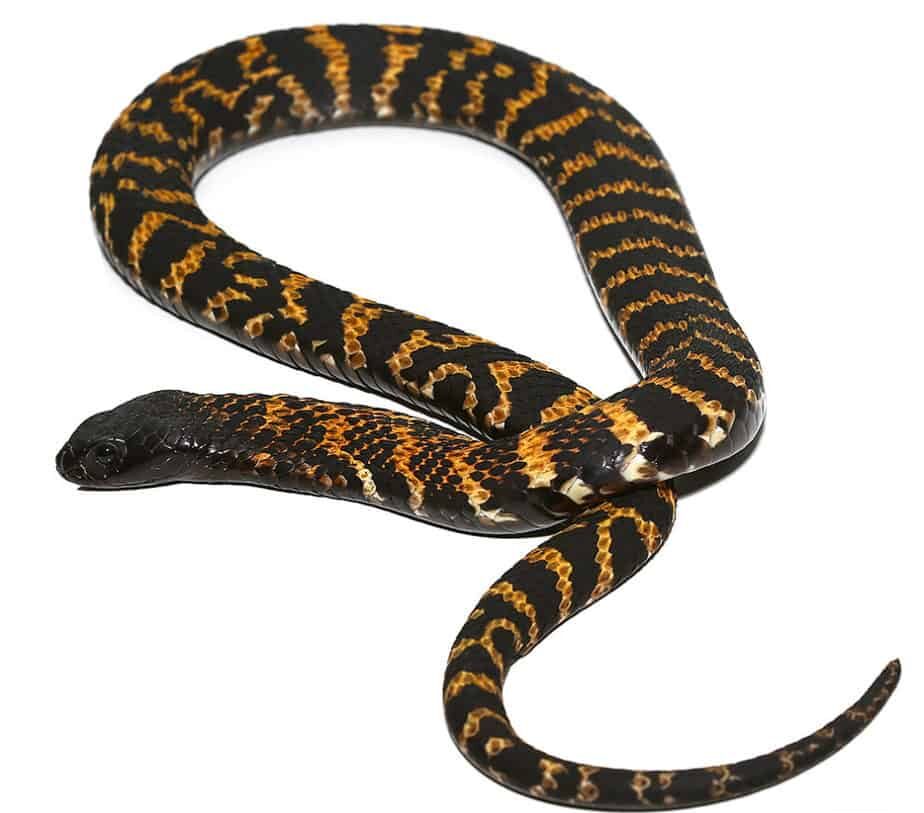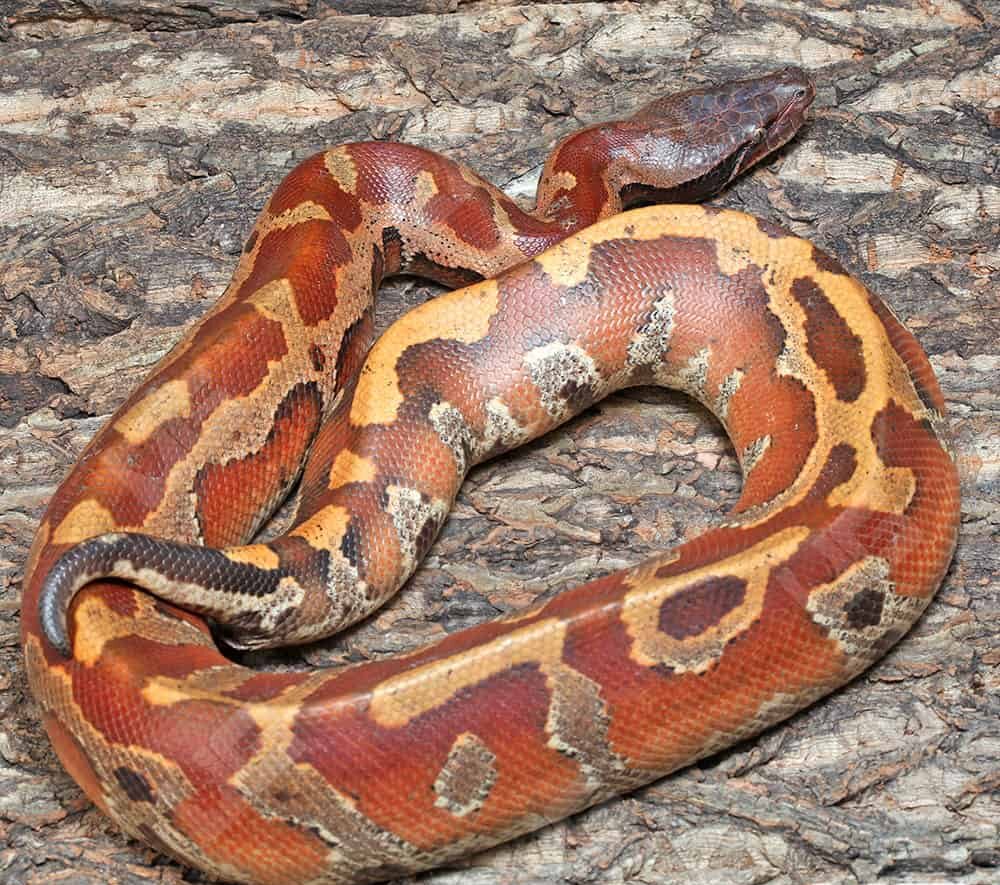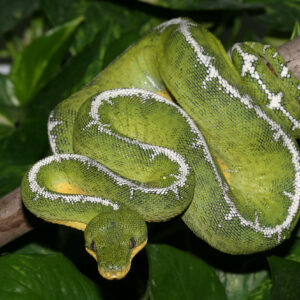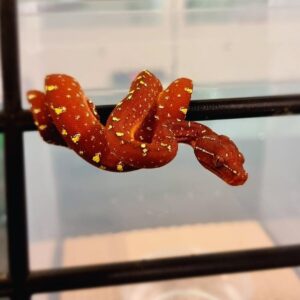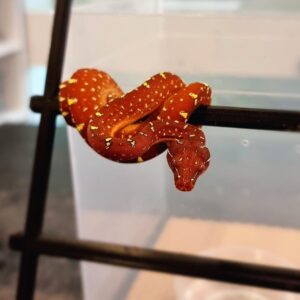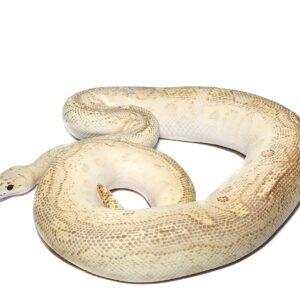Mexican Beaded Lizard For Sale
$999.99
WE HAVE MEXICAN BEADED LIZARDS FOR SALE. HERE ARE SOME HIGHLIGHTS:
- Heloderma horridum
- Captive Bred
- Approximately 27 Inches In Length From Head To Tail
- Fantastic Foragers Feeding On Rodents Regularly
- *These Are Venomous. Please Know Your State Laws Before Inquiring As Some States Require Venomous Permits*
FUN FACTS!
- Gorgeous Lizard With Lava Orange And Yellow Scales In Mixed Patterns From Head To Tail
- Naturally Occurring Out Of Central America Ranging From Guatemala To Mexico
- Living In Mainly Tropical Areas In Central America Spending Small Amounts Of Time Above Ground
- Gorgeous Lizard With Lava Orange And Yellow Scales In Mixed Patterns From Head To Tail
- With Proper Care These Can Live 25+ Years In Captivity
Description
The Mexican Beaded Lizard, scientifically known as Heloderma horridum, is a remarkable reptile native to regions of Mexico and parts of Guatemala. This creature is an intriguing subject of study due to its distinctive characteristics and unique biological traits. It shares close kinship with the Gila monster, another member of the Helodermatidae family, and both species are among the only known venomous lizards in the world.
One of the most striking features of the Mexican Beaded Lizard is its appearance. It possesses a robust, muscular body covered with beaded scales, which give it a textured and almost armored look. These bead-like scales are particularly prominent on its back and tail, providing a unique visual distinction from other lizard species. Its coloration varies, typically consisting of a dark background with lighter yellow or orange patterns, which can sometimes serve as a form of camouflage in its natural habitat.
The Mexican Beaded Lizard inhabits arid and semi-arid environments, often found in scrublands, tropical deciduous forests, and thorn forests. Its range extends from the Pacific coast of Mexico to the highlands of Guatemala, where it prefers areas with abundant rock crevices and burrows for shelter. Despite its formidable appearance and venomous bite, the Mexican Beaded Lizard is generally reclusive, avoiding human contact whenever possible.
This lizard’s venom is a significant area of interest for researchers. Unlike many venomous creatures that use their venom primarily for hunting, the Mexican Beaded Lizard’s venom seems to have evolved more as a defensive tool. The venom is delivered through grooves in the lizard’s lower jaw teeth, and while a bite can be painful and medically significant, it is rarely fatal to humans.
Overall, the Mexican Beaded Lizard is a fascinating example of nature’s diversity, showcasing unique adaptations and behaviors that have intrigued herpetologists and naturalists alike. Its enduring mystery and biological significance continue to make it a subject of ongoing research and conservation efforts.
Physical Characteristics
The Mexican Beaded Lizard, scientifically known as Heloderma horridum, is a visually striking reptile characterized by its unique physical features. Typically, this lizard can grow to an impressive size, ranging from 24 to 36 inches in length. Its robust body is adorned with distinctive bead-like scales, which give the lizard its name. These osteoderms, or bony deposits, cover its skin, providing a rugged armor that offers protection from predators and rough environmental conditions.
The color patterns of the Mexican Beaded Lizard are equally remarkable, with a mix of black and yellow or pinkish markings that create a mottled appearance. This coloration not only aids in camouflage within its natural habitat, blending seamlessly with the rocky terrains and sparse vegetation, but also serves as a warning to potential threats, signaling its venomous nature. The lizard’s skin texture is rough and pebbly, further enhancing its defensive capabilities.
One of the most notable anatomical features of the Mexican Beaded Lizard is its forked tongue, similar to that of a snake. This specialized organ allows the lizard to effectively sense its environment, detecting chemical cues from potential prey or predators. Additionally, the lizard’s powerful jaws and sharp teeth are instrumental in capturing and consuming a variety of prey, from small mammals to birds and eggs.
The Mexican Beaded Lizard’s physical characteristics are not merely for show; they play a crucial role in its survival. The bead-like scales offer protection, while the coloration provides camouflage and a warning. Its forked tongue and powerful jaws enable effective foraging and hunting, ensuring this fascinating reptile thrives in the arid regions of Mexico and Guatemala where it is predominantly found.
Habitat and Distribution
The Mexican Beaded Lizard (Heloderma horridum) is a species that thrives in diverse yet specific environments across its native range. This fascinating reptile predominantly inhabits dry forests, scrublands, and rocky terrains. Such habitats provide the necessary conditions for the lizard’s survival, including ample hiding spots and suitable basking areas to regulate its body temperature.
Geographically, the Mexican Beaded Lizard is primarily distributed across Mexico and Guatemala. Within Mexico, it is frequently found in the Pacific coastal regions, extending from the western states such as Sonora and Sinaloa down to Chiapas. The species also inhabits the Balsas Basin, a region known for its dry, thorny vegetation and rugged landscapes. In Guatemala, sightings are less common but still notable in areas that mirror the environmental conditions found in Mexico.
Protected areas play a crucial role in the conservation of the Mexican Beaded Lizard. One such notable region is the Chamela-Cuixmala Biosphere Reserve located in the state of Jalisco, Mexico. This reserve is characterized by tropical dry forests, which are ideal for the species. Efforts in these protected areas aim to preserve the habitat and mitigate threats such as habitat destruction and illegal collection.
The Mexican Beaded Lizard’s preference for dry, rocky, and scrub-filled environments underscores its adaptability and resilience. However, the specificity of its habitat requirements also makes it vulnerable to environmental changes. Understanding the distribution and habitat preferences of this reptile is essential for developing effective conservation strategies to ensure its continued survival in the wild.
Diet and Feeding Behavior
The Mexican Beaded Lizard, known for its diverse diet, primarily preys on small mammals, birds, eggs, and insects. This reptile exhibits a versatile feeding behavior, adapting to the availability of prey in its environment. Small mammals such as rodents are a staple in its diet, providing essential nutrients and energy. Birds and their eggs are also critical components, especially during nesting seasons when these resources are more abundant.
Insects, though not the primary food source, are consumed occasionally, particularly during periods when other prey is scarce. The Mexican Beaded Lizard employs a unique hunting technique that involves the use of its venom. Unlike many venomous reptiles that inject venom through fangs, this lizard delivers venom through grooves in its lower jaw teeth. When it bites its prey, the venom flows along these grooves, subduing the prey through a combination of pain and immobilization.
This venomous bite is particularly effective against small mammals and birds, ensuring the lizard’s meal cannot escape or fight back. The lizard’s strong jaws and sharp teeth further aid in capturing and consuming prey. The feeding process is methodical; the lizard often holds onto its prey until the venom takes effect, ensuring a successful hunt.
Seasonal variations significantly influence the diet of the Mexican Beaded Lizard. During the spring and summer months, eggs and young birds are more accessible, leading to an increase in their consumption. In contrast, during the autumn and winter, the availability of small mammals may rise, shifting the lizard’s dietary focus accordingly. This seasonal adaptability ensures the Mexican Beaded Lizard can thrive in various habitats, maintaining a balanced diet throughout the year.
Venom and Its Effects
The Mexican Beaded Lizard, a member of the Helodermatidae family, possesses a potent venom that plays a crucial role in its survival. The venom is a complex cocktail of proteins and enzymes, primarily consisting of neurotoxins, which the lizard delivers via grooved teeth located in its lower jaw. When the lizard bites, it chews on its prey or potential threat, allowing the venom to seep into the wound through capillary action. This method of venom delivery is both efficient and effective, ensuring that the victim receives a sufficient dose to incapacitate it.
Upon entering the bloodstream, the venom of the Mexican Beaded Lizard induces a variety of physiological effects. Primarily, it targets the nervous system, causing intense pain, muscle paralysis, and in some cases, respiratory failure. The neurotoxic components disrupt the transmission of nerve impulses, leading to a rapid immobilization of the prey. This immobilization is crucial for the lizard, as it allows for easier consumption of the prey and reduces the risk of injury during the hunting process.
In humans, a bite from the Mexican Beaded Lizard can cause significant pain, swelling, and localized tissue damage. However, fatalities are rare, as the venom is not typically lethal to humans. The primary danger lies in secondary infections or allergic reactions to the venom. Despite its potential harm, the venom of the Mexican Beaded Lizard has garnered interest from the medical community. Researchers have been exploring its properties for potential therapeutic applications, particularly in pain management and the treatment of neurological disorders. Certain peptides found in the venom have shown promise in modulating pain pathways, offering a potential alternative to traditional painkillers.
Overall, the venom of the Mexican Beaded Lizard is a fascinating subject of study, not only for its role in the lizard’s ecology but also for its potential contributions to medical science. This unique aspect of the lizard underscores the intricate balance of nature and the untapped potential that lies within even the most seemingly dangerous creatures.
Reproduction and Life Cycle
The reproductive habits of the Mexican Beaded Lizard (Heloderma horridum) are as intriguing as the lizard itself. These reptiles exhibit unique mating behaviors, which typically occur during the warmer months. Males engage in ritualized combat, wrestling to establish dominance and win the opportunity to mate with a female. This form of competition is vital for ensuring the strongest genes are passed on to the next generation.
Nesting and egg-laying follow successful mating. Females seek out suitable nesting sites, often choosing burrows or other secluded areas to lay their eggs. The clutch size can vary, but it generally consists of 2 to 30 eggs. After laying, the female covers the eggs with soil or leaves to protect them from predators and environmental conditions. The incubation period for Mexican Beaded Lizard eggs is quite prolonged, lasting between 150 and 180 days. The extended duration is necessary for the proper development of the embryos within the eggs.
Upon hatching, the young lizards are independent and must fend for themselves immediately. Hatchlings are miniature versions of adults, but they are more vulnerable to predators and environmental stresses. Their initial growth stages are critical; during this period, they consume small insects and gradually move on to larger prey as they grow.
The growth rate of Mexican Beaded Lizards varies, with factors such as food availability and environmental conditions playing significant roles. In the wild, these lizards can live up to 20 years, though their lifespan may be shorter due to predation and habitat loss. In captivity, under optimal care, they can live even longer, sometimes exceeding 30 years. Captive environments provide consistent food supply, medical care, and protection from predators, which contribute to their extended lifespan.
Understanding the reproductive and life cycle of the Mexican Beaded Lizard provides valuable insights into their survival strategies and the challenges they face in their natural habitat. Conservation efforts must consider these unique aspects to ensure the continued existence of this fascinating reptile.
Conservation Status and Threats
The Mexican Beaded Lizard (Heloderma horridum) is currently listed as Near Threatened on the International Union for Conservation of Nature (IUCN) Red List. This designation indicates that the species is at risk of becoming endangered if the factors threatening its survival and reproduction are not addressed. The primary threats facing the Mexican Beaded Lizard include habitat loss, illegal wildlife trade, and human-wildlife conflict.
Habitat loss is a significant concern for the Mexican Beaded Lizard. Urbanization, agriculture, and deforestation have led to the fragmentation and degradation of its natural habitat. As human populations expand, the lizard’s range is increasingly encroached upon, reducing the availability of suitable environments for it to thrive. This loss of habitat not only affects their living spaces but also impacts the availability of prey and shelter, essential for their survival.
Illegal wildlife trade poses another serious threat to the Mexican Beaded Lizard. Despite legal protections, these reptiles are often captured and sold in black markets due to their unique appearance and perceived value. The demand for exotic pets and traditional medicine has driven illegal poaching, further jeopardizing their already dwindling populations. These illicit activities not only reduce the number of individuals in the wild but also disrupt the ecological balance of their habitats.
Human-wildlife conflict is an additional challenge for the conservation of the Mexican Beaded Lizard. Encounters with humans often result in the lizards being killed out of fear or misunderstanding. Education and awareness programs are crucial in mitigating these conflicts by informing local communities about the ecological importance of the species and promoting coexistence strategies.
Several conservation efforts and programs have been established to protect the Mexican Beaded Lizard. Conservation organizations and government agencies are working collaboratively to create protected areas, enforce anti-poaching laws, and conduct research on the species’ ecology and behavior. Initiatives aimed at habitat restoration and community engagement are also in place, fostering a more sustainable coexistence between humans and these fascinating reptiles.
Cultural Significance and Myths
The Mexican Beaded Lizard holds a unique position in the tapestry of local folklore and indigenous traditions within its native range. Revered and feared in equal measure, this enigmatic reptile is often depicted in various cultural narratives that highlight its mysterious aura. Local communities, particularly those in rural areas of Mexico and Guatemala, have woven its image into their stories and legends, attributing both protective and malevolent qualities to the lizard.
In some indigenous traditions, the Mexican Beaded Lizard is believed to possess mystical powers. It is often seen as a guardian of the land, with its presence signifying the health of the ecosystem. This belief underscores the importance of the lizard in the natural world, and its role as a protector of the environment. Conversely, some myths cast the lizard in a more ominous light, associating it with misfortune and danger. Such dualistic views reflect the complexity of human relationships with wildlife, where awe and apprehension coexist.
Folklore aside, the Mexican Beaded Lizard has also made its mark in literature and media. It has been mentioned in various works of fiction and documentaries, often portrayed as a creature of intrigue. Its distinct appearance and the venomous bite contribute to its fascinating yet fearsome reputation. Although not as widely represented as other reptiles like snakes or alligators, the beaded lizard’s unique characteristics make it a subject of interest in popular culture.
Overall, the Mexican Beaded Lizard’s cultural significance is deeply rooted in the traditions and stories of the communities that share its habitat. Whether seen as a protective spirit or a harbinger of ill-fate, it remains a symbol of the rich and diverse cultural heritage that continues to thrive in the regions it inhabits.


